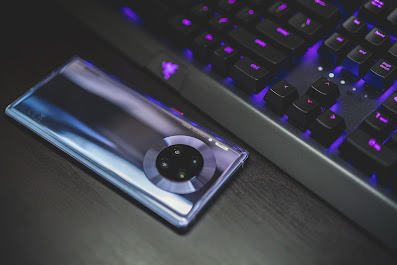In 1987,
it all began in a modest Shenzhen apartment. Huawei was started by 44-year-old
Ren Zhengfei, a former deputy director of the engineering corps of the People's
Liberation Army.
Ren
aspired to establish a homegrown Chinese telecoms firm at a period when all of
China's communications infrastructure was imported from overseas.
Therefore,
the primary focus of early activity was the resale of Hong Kong-imported
private branch exchange (PBX) switches.
Around the
1990s, the business quickly established its own research and development
facility with 600 or more personnel, starting their own PBX switch development
and marketing. Following that, Huawei distinguished itself through a number of
significant initiatives, with the realisation of the C & C08 digital phone
switch—the most potent switch in China—serving as the company's primary point
of entry into the market.
A significant
contract to create the People's Liberation Army's initial national
communications network was also secured by Huawei. As Huawei was positioned as
a national champion, the Beijing government announced a strategy in 1996 to
assist local telecom firms, which sparked the opening of additional R&D
facilities.
Huawei
operated solely in China for ten years, and since 1997, the business has
started to grow. He was successful in landing the first global contract for
Hutchison Whampoa, a Hong Kong-based manufacturer of networking hardware.
Huawei
then started making goods based on the GSM, CDMA, and UMTS standards. A period
of several new contracts in international markets followed this, including one
for five years (1999–2003) with IBM.
Huawei
established its phone division in July 2003, and by 2004, the C300, the
company's first phone, had been delivered. As was to be expected, Huawei goods
have developed through time, going from computers with physical keyboards to
touchscreen ones, and in 2014, even smart watches.
A new,
more than $25 million contract with Dutch operator Telfort to build a
next-generation network was awarded to Huawei in 2004.
Vodafone
and Huawei agreed to a worldwide framework agreement in 2005. This was
significant since it was the first time a Chinese manufacturer of telecom
equipment had its status confirmed by Vodafone Global Supply Chain. Several
agreements and collaborations with various businesses, including security
software provider Symantec Corporation, Australian carrier Optus, Bell Mobility
and Telus Mobility, Nokia Siemens Networks, and others, were signed after that.
Based on
yearly sales of $21.8 billion and a net profit of $2.67 billion, Fortune, an
American magazine, first listed Huawei in its 2010 Global Fortune 500 list. In order
to provide network infrastructure, fixed and wireless communications, data
centres, and cloud computing for international telecommunications clients,
Huawei announced the launch of its Enterprise activity in 2011.
The
following year, Huawei Technologies was both the largest manufacturer of
telephone network equipment in China and the globe.
It is also
referred to as "The King of 5G Development" since it has the most 5G
patents, 5G commercial contracts, and the most intricate 5G portfolio. In
addition to all of Huawei's performance, the company has come under fire for
its business practises, with the US being the most well-known critic for
Huawei's alleged use of espionage-related goods.
Furthermore,
in 2018, the National Defense Authorization Act for fiscal year 2019 included a
clause barring the US federal government from using Huawei technology, citing
security concerns.
However,
Huawei's goal is to "service mankind, not only generate money," and
to use technology to improve people's lives even in the most impoverished
circumstances. Let us not forget that Huawei was formed in 1987 in a modest
apartment in Shenzhen, China, and has since connected over 3 billion people in
over 170 countries worldwide.
Conclusion:
Huawei employs approximately 195,000 people worldwide and works in more than 170 countries and territories, servicing over three billion people. Huawei made CNY301. 6 billion in revenue in the first half of 2022, with a net profit margin of 5.0%.
